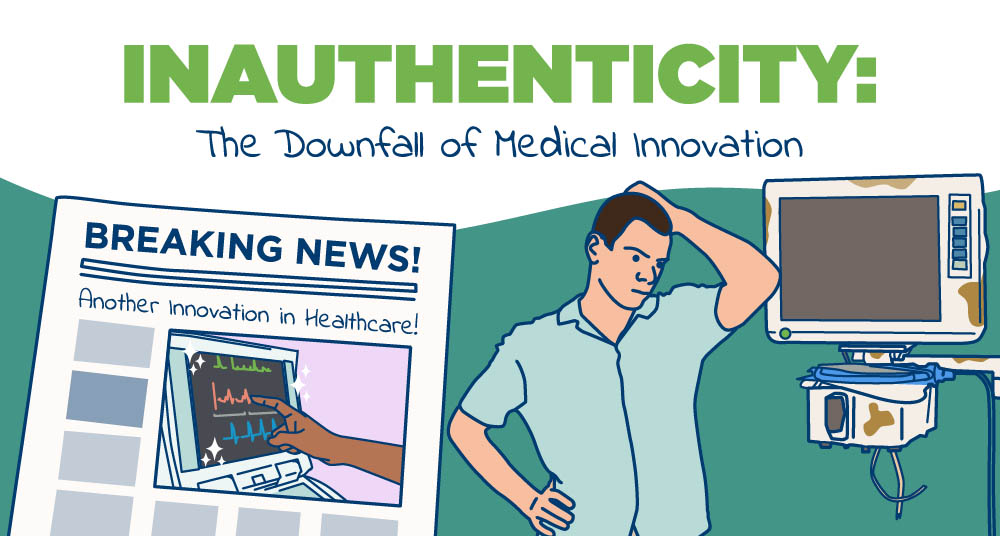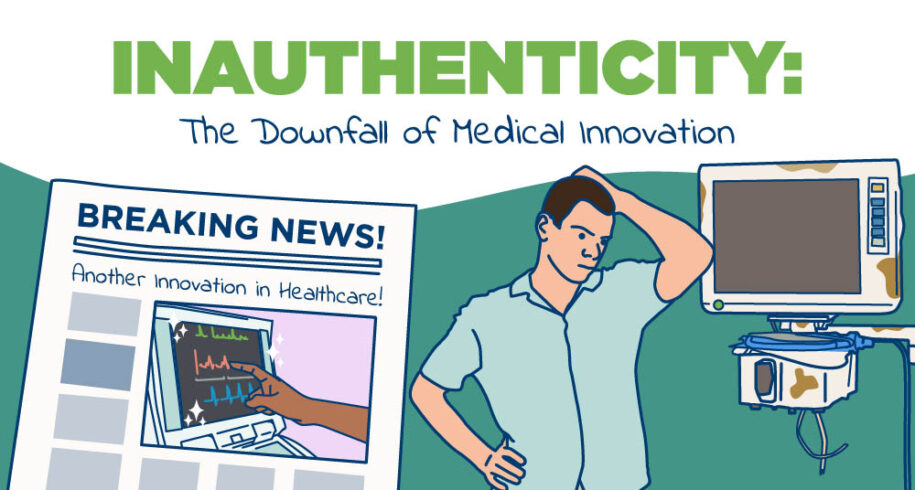
Inauthenticity: The Downfall of Medical Innovation
The next monumental leap forward in medical science and patient care is finally here—or so many overzealous healthcare press releases declare. While every health system hopes to enhance its services with the next generation of systems and technology, these advancements are rarely as groundbreaking as they claim.
Whether it’s a pilot program that doesn’t scale across clinics or a new healthcare network that never materializes, these failed projects have real consequences for health systems and their patients. They make the medical system more difficult to navigate, lead to higher costs from failed investments and ultimately serve as a distraction from real opportunities for health systems & medical groups to improve outcomes for their patients and lower the total cost of care.
What’s Inauthenticity in Healthcare?
We live in a world of rapidly developing technology and instant access to services and information. Much like we’re accustomed to seeing new, futuristic gadgets come out every year, so too are we becoming expectant about advances in medical technology and patient care.
Healthcare technology companies are all too willing to leverage this eagerness to sell us on the next generation of systems. As a Forbes op-ed on healthcare’s inauthenticity epidemic notes, it’s become routine to see articles claiming some new innovation can [1]:
- Revolutionize a provider’s ability to address social determinants of health (SDOH) needs for patients
- Simplify how people access healthcare services and make it easier for them to see medical professionals when they need it
- Reduce healthcare costs and help patients receive the treatment they need at an affordable rate
Unfortunately, many of these supposed breakthroughs never come to fruition. For example, Sachin Jain notes in his Forbes article: “Years later, in a visit to another famous health system that touted a deep focus on social determinants of health, I was alarmed to learn of the infinitesimally small number of hungry patients who were actually fed by the system’s food program despite national acclaim.”
The vast majority of scientific findings and medical breakthroughs, in fact, are much more aggressively advertised than they’re verified. The British Medical Journal, for instance, reviewed around 50,000 articles from 110 of the medical world’s top publications. The study found that just 3,000 of them (6%) had sufficient clinical testing and peer review to be put into practice with patients in a clinical environment [2].
This overblown initial interest in new innovations has, unfortunately, been an enduring feature of medicine for quite some time now. Studies of healthcare breakthroughs from the late 1970s and early 1980s found some sadly familiar patterns in their life cycles [3]:
- Of 101 promising new therapies and technologies, only five made it onto the market within a decade
- Of the small handful that reached clinical use, only one was still around by 2003
Imagine you’re on the leadership team of a large health system, providing healthcare services to hundreds of thousands of patients every year; you can only budget for one new innovative technology; you invest those budget dollars on the latest new technology platform based on PR & marketing from that vendor with your peers, only to find out that it was all hype, doesn’t scale and your return on investment isn’t even a fraction of what you spent.
You’re not going to issue any press release about how you overspent and your project completely failed. Meanwhile, the hype is still out there and the assumption by the market is still that this will be the next big thing.
This is inauthenticity in healthcare. It’s systemic and the failed investments are ultimately paid for collectively by us, the patients, both in our premiums and in our care. Thankfully, not every innovation fails to live up to expectations.
Chronic Care Management (CCM): An Authentic Advancement in Healthcare
Chronic Care Management (CCM) is not a new concept and certainly would not be hailed as “innovative.” Even the introduction of CCM CPT codes by Medicare to support reimbursement for delivery of CCM services is nearly a decade old at this point.
So, it’s not flashy and won’t make any “innovation” headlines. However, when delivered at scale, under the right model, a CCM service could have substantially more impact than almost any other product or service, including:
- Expanded access to a low-cost, high-value service for your patients
- Ability to engage patients longitudinally in between office visits with more primary care touchpoints
- Improved outcomes & lower inpatient utilization for your patients, resulting in higher performance across value/risk-based payment models
- Guaranteed net revenue from reimbursements that sustain the program long-term without dependency on capital budgets
- Reduced burden on clinical staff already at max capacity
Despite all the clear upside to scaling CCM services to patients, and reimbursements being available for the last eight years, 95%+ of medical groups & health systems deliver these services to fewer than 2% of their eligible patient population.
This is because the innovation is not the service itself, but rather the people, the processes, and the technology empowering the delivery of the services. In that sense, not all CCM solutions & services are created equal.
Make a Difference in Patients’ Lives by Facilitating CCM with Signallamp Health
CCM is a time-proven, scalable service that works across various clinical settings and can be successfully implemented in as little as 4-6 weeks under the right model (See 4 Keys to Success in CCM for more). What’s more, you can work with a trusted partner who can facilitate CCM programs for your patients—completely funded by existing reimbursements, removing the need for upfront and/or ongoing capital budgeting.
Signallamp’s model provides dedicated teams of licensed nurses (no call centers), remotely embedded with your providers & practice staff, that work diligently to engage your patients longitudinally in between office visits. We document directly in your EMR (no integration required) and coordinate directly with your clinical staff when patients need interventions. You can think of us simply as your remote care department.
CCM programs aren’t the fancy, flash-in-the-pan future of medicine—they’re the here-and-now of sustainable industry practices. Schedule a consultation with Signallamp Health to learn how your healthcare system can increase its physician capacity and provide catered CCM to more patients.
Sources:
[1] “Coming To Terms With The Healthcare Industry’s Inauthenticity Epidemic.” Forbes. May 4, 2023. [Online] Available: https://forbes.com/. [Accessed August 21, 2023]
[2] “bmjupdates+, a new FREE service for evidence-based clinical practice.” British Medical Journal. March 24, 2005. [Online] Available: https://ebn.bmj.com/. [Accessed August 21, 2023]
[3] “Translation of highly promising basic science research into clinical applications.” National Library of Medicine. April 15, 2003. [Online] Available: https://pubmed.ncbi. [Accessed August 21, 2023]
[4] “Remote Patient Monitoring: What It Is and Why It’s Important.” Maryville University. [Online] Available: https://maryville.edu/. [Accessed August 21, 2023]

